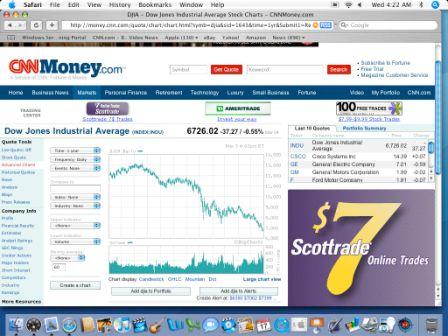

Printable PDF version
Subscribe to our newsletter
2009 Market Forecast
Constructability
Reviews
Vista Second Edition
Construction
Management Specialists
111 Pine Street, Suite 1315
San Francisco, CA 94111
(415) 981-9430
806 West Pennsylvania Ave.
San Diego, CA 92103
(619) 550-1187
www.TBDconsultants.com
2009 Market Forecast
Tony Vallance
Recession!
Yes, we are in a recession – again. In the 1973/74 recession I lost my job. In 1982/83 our small, fledgling company almost went bankrupt. In 1987 we hardly noticed the downturn. In 1991/92 things slowed noticeably for a while. In 2001/02 the deal we had to sell our company (the one we almost bankrupt in 1982/83) nearly failed, but then was consummated. In 2008/09 we are re-learning all the lessons we thought we had learned in 1982/83.
This one seems to me to be the worst I have seen since 1982/83, it might be even worse than that – time will tell. It is also different from the rest. When the banks and finance houses lead the way down then we have a central systemic problem. We all know clients who say to us “The project is all ready to go; I just need to nail down the financing”. Duh! The financing is everything, and right now we don’t have it.

Recovery?
To the question “Will we recover, or won’t we?” the answer is very simple – we will. The only real question is, when? At the risk of appearing too bullish, despite the fact that at the time of writing (end of Feb 2009) the market is dropping daily, there are statistics that seem to point to a recovery in the stock market some time in the middle of this year. Now, that is a stock market recovery, not an economic recovery. It is well documented that markets turn up in the last stage of a recession, before the economic indicators turn up. The economy turns up 3-9 months after the market turns up and employment turns up after that. The market is a leading indicator and employment a lagging indicator. Unfortunately for us, construction is also a lagging indicator.
The bearish view is that recovery will take two to three years, and the vampire view is that this recovery will be a “dead cat bounce”, or “L shaped” and we will have a decade of pain. Since I am no economist I have no credentials to reject the bearish view, but I do. Some would argue that the economists have no credentials either…
Why a Recovery in 2009?
No one knows when the market will turn but here are some reasons the bulls quote explaining why they think we are relatively close to a turn:-
- Governments worldwide are staging, by far, the biggest combined global monetary stimulus in history.
- Stock valuations are cheap relative to Treasuries
- The stock market has already priced in/discounted the "worst case scenario"
- Unlike every other post-war recession, going into this onethere was no business inventory overhang.
- Non-financial balance sheets are exceptionally strong
- New home supply is declining at an accelerated rate
- Surplus budgets invariably lead to downturns in the market, deficits lead to upturns. We are working on the biggest deficit in history.
- Market recessions and recoveries are a "V" shaped event. Once a bottom is reached recoveries tend to go up at the same rate recessions go down.
So, if a market bottom is reached in, say, March - June, the recovery should be underway by the summer. The economy should pick up shortly thereafter.
Market Outlook for 2009
Well, escalation in construction is currently zero, or negative, and will continue so be so for the whole year. Arguably the specter of possible rapid inflation, resulting from the huge monetary stimulus, is at least two years away. So 2010 will probably be flat, or at most less than 4%. Healthcare still has a little inflation in it but even that will probably be gone by mid-year. This is a perfect time to invest in construction projects, bids will be very competitive. General contractors and subcontractors are bidding at cost, to cover overhead and keep core staff. Real labor costs are going down, as are most material prices. Material prices will turn before labor costs do. (See the statement above that business inventories are very low). So, if you can get financing or you have cash – build now.
Domestically most private sector projects are slowing or have already halted. The areas of continuing strength are healthcare and public works (Federal, State, and institutional). In San Francisco, where our company is based, only one architectural firm we know of is actively hiring. Their work is mostly in the public sector.
One thing to watch out for in projects that are already underway is that there will be a higher incidence of claims from contractors. In an era where they are cutting costs to the bone, contractors will be scrutinizing construction documents and changes during construction to maximize their profits. Make sure your QC of your documents is thorough.

Internationally the picture is somewhat similar. The United Kingdom is possibly in worse shape than we are. In Scotland, for instance, it is rumored that 50% of architects are unemployed. British quantity surveyors, who traditionally are in demand in good times and bad, are being laid off in droves. Europe is following the UK down. Russia is potentially in the biggest freefall of all, with the decline of oil prices. Asia is a mixed bag but signs point to China continuing to grow, albeit at a slower rate then the recently announced 8%. In a world where flat growth is a cause for celebration, that they are projecting growth is remarkable. The Chinese salutation "May you live in interesting times" has a double meaning. Hopefully we will shortly experience the positive one.
When bids are as competitive as we are currently seeing them, you can expect contractors to be scouring the contract documents for potential claims, to improve the profitability of a project. So here we take a look at some of the points to consider when reviewing contract documents before going to bid.
Geoff's IT Gems
Vista Second Edition
Windows Vista did not exactly meet with universal acclaim when it was released, and now its follow-up is getting ready to hit the market. What's new, what's changed? Here we take a first look at the beta release of Windows 7, soon to come to a desktop near you.
Design consultant: Katie Levine of Vallance, Inc.